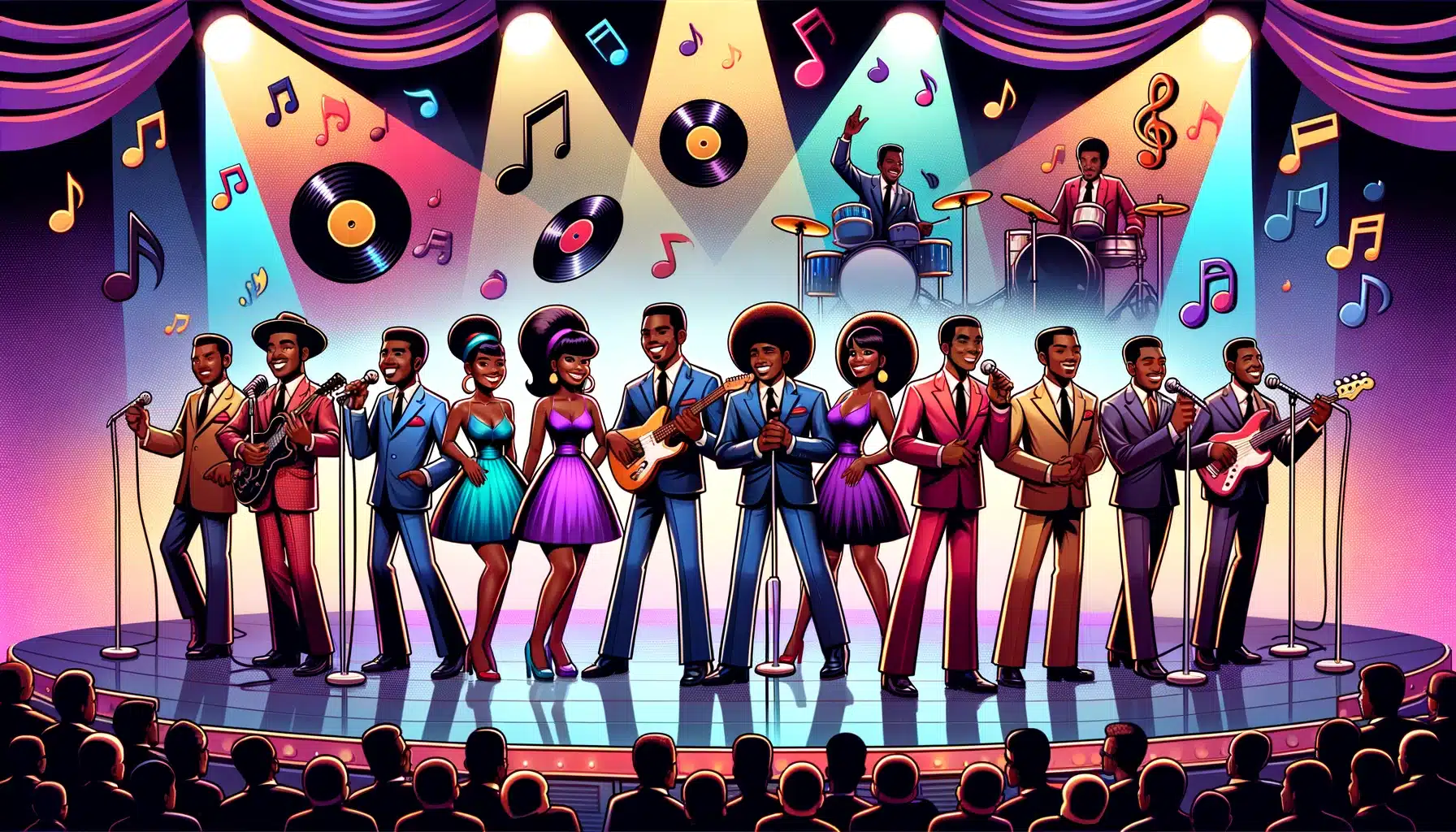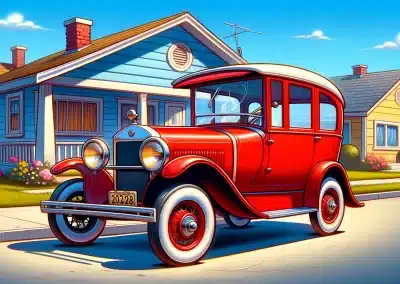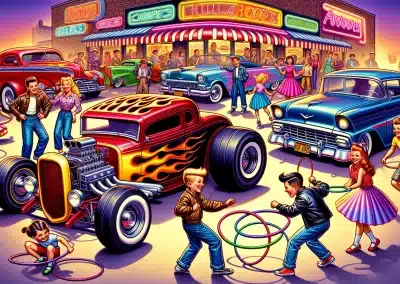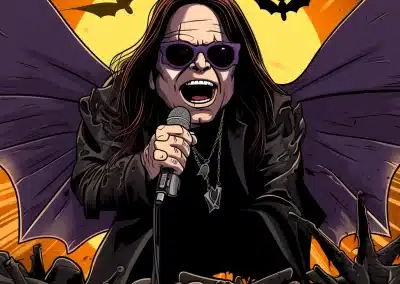The Rise of Motown. Motown Records, the Detroit-based record company founded by Berry Gordy in 1959, transformed the music landscape of America and beyond. With an initial loan, Gordy not only created a platform for black musicians during a time of racial divides but also spawned a musical phenomenon that integrated pop with deeper soulful rhythms. The record company became a hit-making machine, churning out chart-toppers that were the epitome of the crossover music genre, appealing to diverse audiences regardless of race or background.

The sound that characterized Motown was an innovative blend of pop and soul, with a hint of jazz that later inspired elements of hip hop. Brimming with slick production and catchy hooks, Motown was more than just a music label; it was a cultural movement. The ‘Motown Sound’ dominated the airwaves, influencing the music business with its unique style and the way it operated. Unlike other labels, Motown cultivated its talents with a focus on artist development, ensuring that the acts under its roof were primed for the spotlight in every aspect.
Detroit’s contribution to the music scene didn’t go unnoticed, as the city earned the affectionate nickname “Motor City,” but through its music it also became known as “Hitsville, USA.” Motown established itself firmly in both locales, eventually extending its influence to Los Angeles, where it continued to shape the soundtracks of lives with timeless classics. This music, rooted in the rhythm and blues traditions, created a legacy that is still celebrated today.
Historical Context of Motown
Motown Records emerged as a significant musical phenomenon, deeply rooted in the cultural and socio-economic backdrop of Detroit. This label became a symbol of exceptional musical talent and entrepreneurial prowess in the midst of America’s evolving civil rights landscape.
The Origins of Motown Records
Founded in Detroit, Michigan, by Berry Gordy in 1959, Motown Records was originally dubbed Hitsville U.S.A. This iconic music label started in a house that Gordy purchased, which served as both a recording studio and headquarters for the operations. Detroit, often referred to as the “Motor City” due to its automotive industry, provided a vibrant backdrop for this budding venture, with its rich rhythm and blues heritage serving as the soil from which Motown’s distinctive sound would grow.
Berry Gordy’s Vision and Influence
Berry Gordy was not just the founder of Motown Records; his vision and influence propelled the company to become one of the most successful black-owned businesses in American history. Drawing on his experience in songwriting and record producing, Gordy crafted a business model focused on artist development. His creative direction contributed significantly to the Motown sound, a blend that resonated deeply with audiences across racial divides during the height of the civil rights movement. Under Gordy’s guidance, Motown navigated the tumultuous era marked by the Detroit Riots, providing a soundtrack of hope and integration.
Signature Sound and Artistry
The Motown label is renowned for its groundbreaking merger of soulful rhythms and sophisticated melodies, which created a distinct musical phenomenon. This section explores the intricacies of the Motown Sound and the creative maestros behind it.
Defining the Motown Sound
The Motown Sound is a unique blend characterized by vibrant melodies, steady rhythm and blues beats, and a polished production style. This sound became a cultural soundtrack for a generation. Central to this were the Funk Brothers, the label’s in-house band, whose tight-knit instrumentation laid the foundation for countless hits. Their influence on the sound was profound, providing an underlying groove that was at once complex and accessible.
Producers and Songwriters
Producers and songwriters were the unsung heroes of Motown, shaping the label’s musical direction. Among them, the team of Holland-Dozier-Holland stands out as a pivotal force. They crafted songs that encapsulated the essence of Motown, combining compelling stories with unforgettable hooks. The production line approach to songwriting ensured a consistent quality and style, with a conveyor belt of hits that kept the label at the forefront of the music scene.
Iconic Artists and Groups
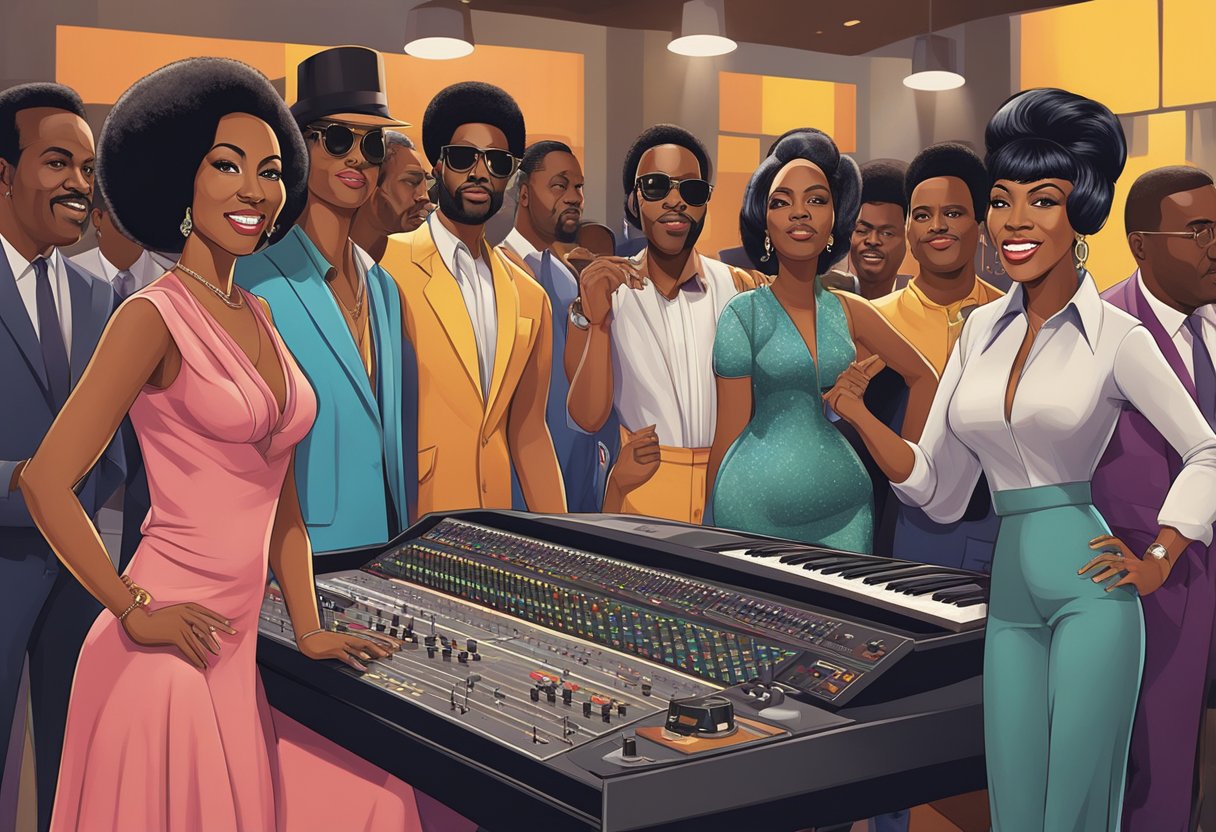
Motown Records is synonymous with a roster of artists and groups that not only defined an era but also became cultural and musical legends. From their soulful melodies to their innovative styles, these Motown figures left a lasting imprint on the music industry and popular culture.
Early Stars of Motown
Among the early talents that shone under the Motown banner, The Marvelettes were one of the label’s first big successes, with their hit “Please Mr. Postman” setting a high bar. Then came Mary Wells, often dubbed as “The Queen of Motown,” whose classic “My Guy” is still an enduring anthem. Marvin Gaye, with his smooth vocals on “Heard It Through the Grapevine,” and Martha and the Vandellas, known for “Dancing in the Street,” also emerged as prominent figures, capturing the essence of the Motown sound.
The Success of The Supremes
The Supremes, with their polished vocals and charismatic presence, became Motown’s premier act in the 1960s. Diana Ross, Mary Wilson, and Florence Ballard, with chart-toppers like “Where Did Our Love Go” and “Stop! In the Name of Love,” transformed the label and became international sensations, embodying the glamorous and accessible image of Motown.
The Temptations and Their Legacy
The Temptations, recognized for their sharp choreography and distinct harmonies, delivered classics like “My Girl” and “Papa Was a Rollin’ Stone.” They built a lasting legacy that extended beyond music, influencing fashion and social movements of the time. Their ability to blend R&B with soul and pop elements helped to solidify the Motown brand as diverse and versatile.
Stevie Wonder’s Contribution
Stevie Wonder’s contribution to Motown cannot be overstated. A musical prodigy, he pushed the boundaries with albums like “Songs in the Key of Life.” Wonder’s pioneering use of synthesizers and advocacy for racial harmony through songs like “Superstition” and “Living for the City” made him not just a Motown standout, but a global icon.
Other significant Motown artists included The Four Tops, with their soulful depths in songs like “Reach Out I’ll Be There,” and The Miracles, who, with Smokey Robinson, gave Motown some of its first hits such as “The Tracks of My Tears.” As for groups like The Commodores, they introduced a funkier sound to the label, with Lionel Richie later achieving massive solo success. And finally, the Jackson 5 brought a new energy and youth to Motown, paving the way for the future King of Pop, Michael Jackson.
The Business of Music
In the midst of the twentieth century, the music business witnessed the exceptional emergence of Motown Records, a label that not only crafted a distinctive sound but also engineered a groundbreaking model for music marketing and production.
Motown’s Marketing Strategy
Motown Records, founded by Berry Gordy Jr., initiated a novel approach to the music business that combined the creation of music with savvy marketing. Gordy’s implementation of an assembly line strategy, borrowed from Detroit’s automotive industry, ensured the production of consistently hit music that resonated with a wide audience. This strategy involved a streamlined process where songwriters, musicians, and singers collaborated in an organized manner, akin to factory workers on an automotive assembly line. Such a structured approach led to the production of catchy and polished singles that often climbed the charts.
Expansion and Relocation
As Motown Records grew from its roots in Detroit, it eventually expanded its presence to key music industry hubs: first to New York and later to Los Angeles. This strategic relocation allowed Motown to tap into a larger pool of talent and industry contacts, enhancing their visibility and influence across a bigger platform. The move to Los Angeles in particular marked a significant shift, as it positioned the company within the center of the entertainment industry, promoting closer associations with television and film and fostering further growth.
The Role of Motown in the Music Industry
Motown became a defining force in the music industry through its impact on the genre of soul and its crossover appeal to pop audiences. It played a key role in racial integration in the music realm and served as a vehicle for Black artists to gain mainstream recognition. Motown Records’ influence extended far beyond its hit records; it shaped the music industry’s approach to artist development, marketing, and production. Berry Gordy’s vision and the label’s innovative practices are credited with significant contributions to the rise and fall of soul music’s popularity and the notion of what a record company could achieve in a racially divided America.
Cultural Impact and Legacy
The Motown sound, a blend of rhythm and blues with soul music, did more than just entertain; it left an indelible mark on the social fabric of America and continues to influence various music genres and contemporary society.
Motown and the Civil Rights Movement
Motown emerged during a time of significant social change, aligning closely with the Civil Rights Movement. The label’s music offered a voice to African Americans and became a harmonious backdrop to the fight for equal rights. Its upbeat soul music and charismatic performers were not only a source of inspiration but also a tool for unity across racial divides. Artists like Barrett Strong and charismatic choreographer Cholly Atkins helped define the era’s sound and style, often echoing the sentiments of a generation seeking change.
Influence on Music Genres
The impact of Motown extends beyond its original era into various music genres. It played a foundational role in the evolution of rhythm and blues into contemporary soul and pop music. Moreover, Motown’s beats and bass lines have become staples in hip hop music, with artists frequently sampling its classic hits to create new works. Figures such as Nelson George have acknowledged Motown’s role in shaping modern American music and its unique ability to bring together diverse sounds and communities.
Motown in Contemporary Society
Today, Motown’s legacy continues to resonate within contemporary society. It’s not only celebrated through media and documentaries but is also a subject of music education in schools and universities, highlighting its historical importance and cultural contributions. Musicians like Uriel Jones, one of Motown’s original Funk Brothers, greatly influenced the drumming techniques that pervade modern music production. The label’s story and sustained relevance underscore how Motown remains a vital part of America’s cultural dialogue.
Prominent Motown Hits
Motown Records, often lovingly referred to as Hitsville U.S.A., has been responsible for launching a multitude of songs that have become staples in the landscape of American music. Their distinctive style and unforgettable melodies have left an indelible mark on the industry.
The track “Shop Around” by The Miracles holds a special place in Motown’s history, as it became Motown’s first million-selling hit record. This song set the stage for the record company’s future success, showcasing their ability to create hits that resonated with a wide audience.
Marvin Gaye’s “What’s Going On” is another undeniable classic, which not only achieved commercial success but also made a powerful social statement. It is often celebrated for its thought-provoking lyrics and soulful delivery.
Stevie Wonder’s album “Innervisions“ features a plethora of hits and is frequently highlighted for its creativity and depth. This album cemented Wonder’s place in Motown’s pantheon and showcased the label’s willingness to push the boundaries of the genre.
The performers who came out of Motown were not just musicians; they were icons who shaped the soundscape of their times. Artists like Diana Ross, The Temptations, and Smokey Robinson remain beloved figures whose songs continue to be celebrated and covered by artists across generations.
Here is a brief list of some notable Motown hits:
- The Supremes: “Stop! In the Name of Love”
- Marvin Gaye: “I Heard It Through the Grapevine”
- The Temptations: “My Girl”
- Jackson 5: “ABC“
- Stevie Wonder: “Superstition”
Their music reverberates through time, as these hits are not just representative of a bygone era but continue to influence music to this day.
Notable Collaborations and Partnerships
During its rise, Motown was home to some of the most iconic collaborations and partnerships which greatly influenced the genres of soul and jazz. The label’s success hinged on the cohesive efforts of artists and producers alike.
One pivotal pairing was that of Holland-Dozier-Holland, a songwriting and production team consisting of Lamont Dozier and brothers Brian and Eddie Holland. Their innovative technique and catchy lyrics helped craft numerous hits for acts like The Supremes and The Four Tops.
- Songs created by Holland-Dozier-Holland:
- “Where Did Our Love Go”
- “Heat Wave”
- “You Can’t Hurry Love”
Barrett Strong also contributed significantly to Motown’s success. As the voice behind the label’s first hit “Money (That’s What I Want),” Strong later transitioned to songwriting, helping to pen tracks for artists such as Marvin Gaye and The Temptations.
- Barrett Strong’s notable works:
- “I Heard It Through the Grapevine”
- “War”
Norman Whitfield, another key figure in the Motown story, pushed the boundaries of the Motown sound into psychedelic soul. Working closely with The Temptations, Whitfield co-wrote and produced some of their greatest work, lending a more socially conscious voice to the music of the era.
- Collaborations with Norman Whitfield:
- “Papa Was a Rollin’ Stone”
- “Just My Imagination (Running Away with Me)”
Through these partnerships, Motown not only shaped the sound of a generation but also fused soul with the pop sensibility that allowed it to break racial barriers and resonate with a wide audience.
The Decline and Revitalization of Motown
Throughout its history, Motown experienced significant challenges but also demonstrated remarkable resilience and adaptability, reshaping itself in the face of industry changes.
Challenges Faced by Motown
Motown, once a flourishing empire in the music industry, faced a series of challenges that contributed to its decline. The label’s success was largely attributed to Berry Gordy, the founder, who masterminded a production line approach that churned out hit after hit. However, as musical tastes evolved in the late 1960s and 1970s, Motown struggled to keep pace. The label was criticized for sticking too closely to its formulaic method, which eventually led to a decline in chart success. Key artists left the label, seeking creative control and better financial terms, which Motown’s contracts had often restricted.
Competition from other labels and the emergence of new music genres also eroded Motown’s dominance. The company’s relocation from Detroit to Los Angeles in the early 1970s symbolized a larger shift—both physical and metaphorical—away from its roots, leading to a perceived disconnect with the original sound and community that had fueled its rise.
Motown’s Resurgence and Adaptation
In response to these challenges, Motown underwent a period of resurgence and adaptation. Embracing change, the label began to sign new artists and diversify its musical material, stepping beyond the soul and R&B genres that had defined its earlier years. This strategic pivot helped to refresh the brand and remain relevant in the evolving musical landscape.
Motown also leveraged the nostalgic appeal of its classic hits, re-releasing popular singles and albums. The timeless quality of Motown’s early material provided a steady income and enhanced the label’s legacy, reminding new audiences of its seminal impact on music. Yet it was the label’s willingness to innovate and embrace new sounds that ensured its survival and ongoing influence in the industry.
By continuously adapting to the changing musical environment, Motown managed to overcome its previous challenges, finding new avenues for success without losing sight of its storied past.
Motown’s Influence in Popular Culture
Motown Records reshaped the landscape of American music, bringing new dance moves to the mainstream and securing its legacy through cinema and media portrayals.
Motown and Its Impact on Dance
The energetic Motown sound gave rise to distinctive dance styles that have become emblematic of the 1960s. Artists like Jackie Wilson, known for his electrifying performances, helped popularize rhythmic moves and an exuberant stage presence that influenced both peers and fans. The synchronization and choreography of groups such as The Temptations set trends, leading to the creation of dance moves that people across the country would emulate.
Representation in Film and Media
In film and media, Motown’s story is a testament to its cultural impact. Movies such as “Dreamgirls,” loosely based on the experiences of Diana Ross and The Supremes, illustrate the label’s influence on the music landscape and beyond. Documentaries and biopics about Motown artists like Gladys Knight and the Pips have further cemented their place in not just music history, but in the wider narrative of American entertainment. Even the Beatles were influenced by Motown, covering songs from the label in their early years and contributing to the global spread of its sound.
Education and Preservation of Motown’s Legacy
Detroit Public Schools played a pivotal role in laying the foundations for a generation of artists who later became synonymous with the Motown sound. An effective music education program, fundamental to these schools since the 1920s, equipped many Motown artists with the skills necessary to succeed. These programs nurtured the talents of young musicians, some of whom would go on to sign with Motown Records.
Hitsville U.S.A., better known as the Motown Museum, stands as a testament to Motown’s dedication to preserving its extraordinary legacy. In the same building where Motown’s hits were once crafted, there’s now a strong emphasis on educational programs. Such initiatives aim to inspire and inform current and future generations about the label’s significant impact on music and culture.
At the core of these efforts is Hitsville U.S.A.’s Hitsville NEXT program, which empowers young creatives by providing them with mentorship and resources to hone their craft. Moreover, classes and seminars held by the Museum perpetuate the Motown tradition, combining education with the storied past of the label. The Motown Museum also collaborates with schools and educational institutions like Northwestern to extend its reach and impact.
By focusing on both educational initiatives and the preservation of historical sites, Motown’s legacy continues to resonate and inspire, ensuring that the magic of the Motown Sound lives on for future artists and enthusiasts alike.

